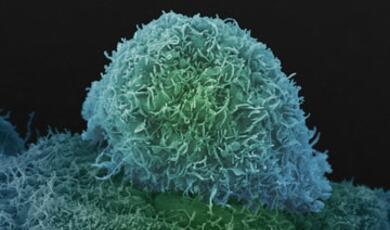21 January 2014
Criminal Minds
Professor Glenn D Wilson
Some say that the causes of crime cannot be studied because there is no agreement as to what is criminal behaviour. It is true that societies differ in their vice laws controlling behaviours which involve no malice but are engaged in to satisfy morally dubious desires. Laws against prostitution, unorthodox sexual behaviour, gambling abortion and drug-taking vary enormously around the world. Often they lead to unintended consequences, including increases in real crime (viz. US Prohibition laws). Murder, stealing, robbery, assault and rape, involve intent to harm others and are outlawed by all societies. These are crimes in anyone’s book.
Many people believe themselves to be experts in crime and to know the solutions to problems in the field. They include journalists, politicians, police, lawyers and judges. Although influential in decision-making, their expertise is mostly on impression, anecdote and ideology. Many myths are exploded when the scientific evidence is examined.
A popular theory of crime is that it is due to poverty and unemployment. However, crime in the UK increased sharply between 1950 and 1970 when we “never had it so good” and is now falling, despite “austerity”. Crime in the US also fell recently through a period of rising unemployment. The links between unemployment levels and crime are often surprising. During the time Hugo Chavez controlled Venezuela (1999-2013) unemployment was roughly halved but the murder rate tripled (Sedghi, 2013). If anything, poor countries and those with greater inequality have less crime (Fraser, 2011).
The looting across London that occurred in the 1911 riots was ascribed by some commentators as an eruption of frustration in pockets of economic deprivation within certain communities. Yet the looters mainly targeted luxury goods like designer trainers and state-of-the-art technology, not staple foods. Envy, “entitlement” and excitement on long, hot, summer nights would seem to have more explanatory power (Briggs, 2012). Copycat rioting is also well-known, when police are seen repeatedly on national news to be helpless in the face of widespread looting. Fraudsters also seem to be motivated by greed more than need. Dodd (1998) reported that only 13% of fraudulent insurance claimants were in financial difficulties; most had regular incomes.
Perhaps it is the perception of unfairness that is critical, rather than poverty per se. An intuitively reasonable idea is that financial inequity within the context of a radical, egalitarian culture would create stresses manifesting in crime rises. Cross-national comparisons fail to confirm this (Stack, 1984). However, some support has been found for the importance of local inequality, where people can more easily see they are not “keeping up with the Joneses”. US neighbourhoods that are ethnically and economically mixed have higher crime rates (Hipp, 2006).
The idea that crime results from poverty may stem from the observation that all social problems tend to congregate within the same inner-city areas. In this sense, bad housing and education, unemployment, drugs and crime rates all go together (c.f., Channel Four’s “Benefit Street”). However, it is simple-minded to attribute one social problem to another. People in these areas also elect Labour councils, yet not so many sociologists ascribe crime to voting Labour. Correlations do not confirm cause and effect.
The Government of Canada recently sponsored a review of “risk factors” in antisocial and delinquent behaviour among youth (Day & Wanklyn, 2013). Although these factors were predictive in the sense that they could be observed before outcome measures were taken, they were nevertheless correlational, with ambiguous cause and effect. Parental fecklessness and child abuse, for example, could be genetically-linked (via traits like aggressiveness and irresponsibility) as much as causes of delinquency. Low IQ could predict the likelihood of getting caught as much as criminal predisposition (c.f., the intelligence of serial killers).
Establishing cause and effect is difficult because it is not ethically possible to conduct proper experiments with humans, hence some researchers use animal models. Bambico et al, 2013) investigated the “absent father” effect on the neurological and social development of California mice, a breed which is normally monogamous and biparental. Mice raised without a father (but only females) were more aggressive than those raised by both parents. This was connected with alterations to the medial prefrontal cortex, which is important in social behaviour. It is consistent with human studies showing that girls have a greater dependence on father contact than boys.
A correlate of crime that could be causal is atmospheric lead. Some historians attribute the fall of ancient Rome to the storing of wine in lead vats, resulting in poisoned brains and sometimes insanity in their rulers. Lead in petrol and paint could have had a similar impact in the modern world. Mielke & Zharan (2012) report that rates of aggravated assault could be 90% explained (at least statistically) by levels of lead in the air assuming a lag of 22 years. Research over several decades has built a case that atmospheric lead impairs IQ and increases rates of ADHD. Bone lead has been linked to various forms of crime and delinquency (Nevin, 2000). Lead in the environment could certainly contribute to crime but it would have helped if other explanations had been considered in comparison, e.g., incarceration levels or aging of the population (Steffensmeier & Harer, 1987).
Opportunity is an important contributor to crime. Security devices have improved considerably in recent years and this probably the reason certain crimes have fallen sharply (Farrell, 2013). For example, car theft has plunged since the introduction of sophisticated alarms, immobilisers, tracking devices and automatic number plate recognition. On the other hand, some new types of crime (e.g., card and web fraud) may be on the increase because security technology is lagging.
CCTV has been important in the fight against crime, both as a detection method and deterrent. Unfortunately, it has also altered the clothing worn by criminals (hoodies) and may displace crime elsewhere. Nettle et al (2012) put signs with watching eyes and a warning to criminals above bicycle racks at a British university campus. Bicycle theft was reduced by 62% in the three areas where the signs were deployed but increased by 65% in control locations.
Zero tolerance policing, involving a crackdown on minor offences like graffiti, vandalism and fare-dodging, seems to impact crime of all kinds. The approach was pioneered in New York under Mayor Giuliani and has since been copied in other US cities as well as Liverpool, where crime dropped 26% under Bernard Hogan-Howe (now the London Met Chief). A reputation for “toughness” is important in street gangs, members often committing crimes for status-enhancement. Making it tough to breach minor laws may reduce the need to commit major crimes (Dur & Van der Weele, 2013).
A promising aid to policing is predictive mapping of crime hotspots (an approach reminiscent of weather forecasting). This is based partly on previous geographical crime locations (e.g., of muggings, burglaries or car theft) but also projects patterns indicating where criminals (perhaps even one particular criminal) are most likely to strike next (Hering & Bair, 2014). When a house has just been burgled, there is an increased likelihood that those close by will be targeted. In some respects, burglars act like wild animals scavenging for food; they return to places that have been productive in the past until such time as they are exhausted, or traps have been laid.
Several studies in the UK and US have found that a high proportion of crime is down to a hard core of individuals lacking moral compass. The Cambridge Institute of Criminology studied around 700 young people in Peterborough following them over a decade. They found that nearly half of the crimes, including burglary, theft, robbery, violence and vandalism, were committed by just 4% of youths. On average, they had chalked up 278 offences each, most having criminal records from the age of 12. On their own admission, these individuals were impulsive and short-sighted with no self-control or conscience. The law-abiding majority did not lack opportunity for offending, nor did they fear the consequences of getting caught - they never contemplated crime because they saw it as morally wrong (Wickstrom et al, 2012).
Adult crime, aggression and antisocial behaviour have been connected with the amount of time spent viewing TV in childhood (Robertson et al, 2013). The association held for both boys and girls and after IQ and social class were controlled. The authors interpret it as causal though other possible mediating factors, such as disobedience of parental attempts to restrict viewing and personality in both the subjects and their parents, cannot be excluded.
H.J. Eysenck (1964) reckoned that criminality stems from a failure of the classical fear conditioning that we call “conscience”. This theory found support in a study of 1795 children who had their electrodermal conditioning measured at age 3 (Gao et al, 2009). By the age of 23, 137 of them had acquired a criminal record and these were compared with 274 non-criminal members of the same cohort matched for sex, ethnicity and social adversity (poor background). Those who had become criminals in their 20s showed deficient fear conditioning as young children. The authors relate their weak conscience to dysfunction of the amygdala (fear) and prefrontal cortex (restraint).
To a considerable extent a criminal predisposition is genetically determined, especially lifetime criminality. Estimates of heritability vary between 40% and 70% and crimes runs strongly in families because of both genes and mating patterns (Beaver, 2013). Evidence from twin comparisons is supported by adoption studies showing that adopted children reflect the criminality of the biological father more than their foster father, especially with respect to property crime (Mednick et al, 1984). An environmental risk factor is still detectable, however, and this is additive with genetics (Kendler et al, 2013).
Certain genes relating to dopamine transmission (DAT1, DRD2 and DRD4) have been identified as raising the risk of violent crime and these are apparently more prevalent in neighbourhoods with high levels of both poverty and violence (Barnes et al, 2013). Perhaps people with criminal genes gravitate to areas of social disadvantage because they are disorganised and lacking in restraint.
Relationships between genes and crime are mediated by personality traits. Crime-prone individuals are higher on impulsiveness, thrill-seeking and negative emotionality, lower in agreeableness, conscientiousness and restraint (Miller & Lynam, 2001; Reid, 2011). The fact that crime can be fun is indicated by TV viewing preferences and the popularity of video games like Grand Theft Auto. Different types of crime are associated with different personality profiles. Fraud, for example is characterised by extraversion, arrogance, and higher IQ than burglary.
A Channel 4 Documentary, Burgled (27/8/13) provided valuable insight into the motivation of burglars. It featured an interview with a petty criminal who claimed that the money was not important; he would blow that on drink, gambling and horses within a few hours and forget he ever had it. Excitement was the main driving force: “Remember Christmas, when you were a kid, tearing off the paper and you don’t know what you are going to get”. Many criminals are not just lacking in self-control but are active thrill-seekers who fear boredom more than punishment (Burt & Simons, 2013).
Psychopathy is a personality disorder characterised by impulsiveness, aggression, recklessness, deceit and lack of concern for others. It is more common in criminals (15-20%) but is overrepresented in several occupational groups (business executives and bomb disposal personnel more than those in caring professions). It is associated with over-activity in certain brain areas (especially the nucleus accumbens, part of dopamine reward system in the mid-brain) and reduced functioning in prefrontal areas of the cortex concerned with moral reasoning, restraint, and pro-social emotions such as empathy, guilt and embarrassment (Gregory et al, 2012). These brain differences may be due to genes, brain damage, drugs or other environmental factors.
Can you tell a criminal just by looking at their face? Criminals are distinguishable from non-criminals beyond chance from a still photo of their face, after controlling for gender, race, age, attractiveness and emotional expression (Valla et al, 2011). The cues used are unclear but probably include testosterone-related (macho) indicators, which are also known to affect judgements of altruism and trustworthiness (e.g. bushy eyebrows, square jawline and swarthy skin).
Subjects in Valla’s study could not reliably tell from the faces what type of criminal they were (murderer, rapist, forger, arsonist, drug-dealer, etc), which is consistent with the fact that criminals do not specialise (those committing one type of crime are likely to commit others). Rather chilling was the finding that women were poor at detecting rapists, actually rating them as less likely to be criminal than other types of criminal and even non-criminals. Rapists seem to have evolved a camouflage that prevents women from spotting and thus avoiding them.
This might provide a clue as to how genes for psychopathy are maintained in the population. Krupp et al (2013) argue that psychopathy is not so much a dysfunctional mental disorder as a life style with adaptive benefits. They present evidence that psychopaths are nepotistic, directing their violence towards unrelated people and thus favouring their own genes. Psychopaths are often attractive to women and hence very fertile. Lynn (1995) reported that criminals had an average of 3.91 children compared with 2.21 in the general population matched for social class and residential area. Insofar as criminality has genetic a component this would imply a dysgenic effect.
Attention deficit-hyperactivity disorder (ADHD) is estimated to apply to 30-40% of long-term criminals and treating it does seem to reduce criminal behaviour. A large-scale Swedish study (25,656 people diagnosed with ADHD) showed medication to reduce the risk of crime considerably – by 32% for men and 41% for women (Lichtenstein et al, 2012). Treatment compliance may partly account for this result but it is still noteworthy, despite the debate over ADHD medication.
Is imprisonment the solution to crime? Some 25 US States have introduced a “three strikes” law, whereby a third felony would result in a mandatory life sentence. The scheme is costly in terms of increased prison numbers and has resulted in many anomalies, such as stealing a pizza resulting in a life sentence. It has also led some “second strikers” to move State to avoid “striking out”. And so far, it has proven effective in reducing crime as compared to States without such a law (Kovandzic, 2004). There is even a slight increase in murders because some previously convicted criminals feel cornered, with nothing to lose.
There seems to be confusion as to what exactly prison is for. Some say punishment but prison is an oblique and expensive way of punishing people. Heavy fines and community service would surely give back more to society than having them languish in a cell. Some say deterrence is the reason but there is no evidence of such an effect. Hardened criminals do not fear prison and short prison sentences are probably counterproductive in that operate as “schools for crime” (Pritikin, 2008). As for rehabilitation, prisons stigmatise people, sever family ties and make it more difficult to get employment on release.
Another reason sometimes given for putting people in prison is retribution – the argument is that they “have to pay for what they have done”. Unfortunately, this often penalises people for the consequences of their behaviour regardless of whether harm was intended. If a driver falls asleep at the wheel and causes the death of 10 people, he has no more criminal intent than if he hit a tree and injured himself. He is not dangerous after his driving license has been taken away. And yet, a man was sentenced to 5 year in prison for this not long ago. While it might please the relatives of those killed it is unnecessary for protection of society and expensive to the taxpayer. I believe the only proper use of prison is containment of dangerous criminals, including violent men and serial burglars who cannot be reformed.
Prison is a brutalising experience, rife with drugs and coercive sex, and increasing suicide risk ten-fold. Wherever possible humane alternatives should be preferred. Among the best is community service. This has elements of punishment (deprivation freedom and some degree of humiliation), reparation (payback to the community) and rehabilitation (it maintains family ties and promotes a work ethic). It is better than short-term prison sentences in reducing reoffending (Vogelgesang et al, 2010) and about as good as electronic monitoring with a suspended prison sentence (Killias et al, 2010).
Recidivism figures give little cause for optimism regarding the effectiveness of short prison sentences. In the UK one-third of those cautioned or convicted in 2012 had at least 15 previous convictions and 10% were first time offenders (Selkeld, 2013). One 66 year old shoplifter had 330 convictions since 1959 and was still released immediately with a short prison sentence because he had already served half of it (61 days) while awaiting trial. Ministry of Justice figures show that a crime is committed every 10 minutes by a criminal on bail, including 2 rapes per week and one in seven murders (Doyle, 2013).
Can we predict in advance which criminals are likely to reoffend? Aharoni et al (2013) gave 96 offenders a go/no-go laboratory task that measures impulse control while monitoring brain activity by fMRI. Error-related responses in the anterior cingulate cortex indicative of impulsiveness were predictive of rearrest within the 4 years following release from prison. Those with low activity in the ACC were about twice as likely to recidivists. This is still not accurate enough for determining life-altering decisions with respect to individuals.
Psychopaths are the most difficult to rehabilitate. There is debate as to whether they are treatable at all (Wilson & Tamatea, 2013) and even though the risk of recidivism is greater than for non-psychopathic offenders, they are about 2.5x more likely to charm a parole board and be given early release (Porter et al, 2013).
Neurocriminology is a controversial area. Raine (2013) has been studying the brains of murderers for many years and says they are often characterised by underactivity of the prefrontal cortex. This, he maintains, makes it difficult for them to control violent emotions originating in the limbic system. Presenting PET-scan evidence to this effect Raine was able to help a convicted murderer (Donta Page) to escape the death penalty.
Raine points to several other clues that an individual is prone to psychopathy, including an exceptionally slow heart rate (Ortiz & Raine, 2004). He notes that environmental factors such as child abuse, neglect, poor nutrition and prenatal smoking and alcohol can also contribute to the development of a criminal brain.
If insanity is a defence against crime, then why not brain damage? In Britain an armed robber recently had his sentence trimmed after the discovery of a brain tumour that was pressing on his frontal lobe. The defence claimed this was the cause of his aggressive and compulsive behaviour and that after brain surgery he was no longer dangerous. He was not released outright, however, because the judge reckoned he still “knew what he was doing was wrong”. Genetic variation has also been taken in court as mitigation. In Italy, a murderer had one year cut off his sentence because the defence presented evidence that he carried 5 genes associated with violence (Feresin, 2009). This seems extraordinary because (unlike the case of removing the brain tumour) he would be just as dangerous on release.
Advances in neurocriminology are creating a legal and ethical minefield. It is no longer clear that the concept of free will is useful in the forensic context. All behaviour is determined, albeit by a multitude of forces (both genetic and environmental) and all of them beyond our control. If the brain circuits underlying moral choice are impaired, how do we determine culpability or decide on appropriate punishment? (Glenn et al, 2013). Perhaps it is time to replace the ideas of guilt and responsibility with our best efforts to assess criminal “intent” and future “dangerousness”. These should be what count when it comes to depriving a person of their freedom and ensuring the safety of everyone else.
References
Aharoni, E. et al (2013) Neuroprediction of future arrest. PNAS, 110 (online).
Barnes, J.C. et al (2013) Genetic risk factors correlated with county-level violent crime rates collective disadvantage. Journal of Criminal Justice, 41, 350-356.
Beaver, K.M. (2013) The familial concentration and transmission of crime. Criminal Justice and Behaviour, 40, 139-155.
Briggs, D. (2012) Below the surface and beyond the rhetoric: youth, consumerism and the London riots. Dialogue Society, 23 May (online).
Burt, C.H. & Simons, R.L. (2013) Self-control, thrill-seeking and crime: Motivation matters. Criminal Justice and Behaviour, 40,1326-1348.
Day, D.M. & Wanklyn, S.G. (2013) Identification and operationalization of the major risk factors for antisocial and delinquent behaviour among children and youth. Public Safety Canada (online).
Dodd, N.J. (1998) Applying psychology to reduction of insurance claim fraud. Insurance Trends, 18, 11-16.
Doyle, J. (2013) Daily Mail, 16/9/13.
Dur, R. & Van der Weele, J. (2013) Status-seeking in criminal subcultures and the double dividend of zero-tolerance. Journal of Public Economic Theory, 15, 77-93.
Eysenck, H.J. (1964) Crime and Personality, Oxford: Houghton-Mifflin.
Farrell, G. (2013) Five tests for a theory of the crime drop. Crime Science, 2 (online).
Feresin, E. (2009) Lighter sentence for murderer with “bad genes”. Nature (online).
Fraser, D. (2011) Crime, poverty and imprisonment. Civitas: Institute for the Study of Civil Society. (September).
Gao, Y. et al (2009) Association of poor childhood fear conditioning and adult crime. American Journal of Psychiatry, 167, 56-60.
Glenn, A.L. et al (2013) Author reply: Vitaccio, Erickson and Lishner: Holding psychopaths morally and criminally culpable. Emotion Review, 5, 426-427.
Gregory, S. et al (2012) The anti-social brain: Psychopathy matters. A structural MRI investigation of anti-social male violent offenders. Archives of General Psychiatry (online).
Hering, A.S. & Bair, S (2014) Characterising spatial and chronological target selection of serial offenders. Journal of Royal Statistical Society, Series C (Applied Statistics) 63,123-140.
Hipp, J.R. (2007) Income inequality, race and place: Does the distribution of race and class within neighbourhoods affect crime rates? Criminology, 45, 665-697.
Kendler, K.S. et al (2013) A Swedish national adoption study of criminality. Psychological Medicine, (online).
Killias, M., et al (2010) Community service versus electronic monitoring – What works better?: Results of a randomised trial. British Journal of Criminology, 50, 1155-1170.
Kovandzic et al (2004) “Striking out” as crime reduction policy; The impact of “three strikes” laws on crime rates in US cities. Justice Quarterly, 21, 207-239.
Krupp, D.B. et al (2013) Psychopathy, adaptation and disorder. Frontiers in Psychology, 4, 139.
Lichtenstein, P. et al (2012) Medication for attention-deficit-hyperactivity disorder and criminality. New England Journal of Medicine, 367, 2006-2014.
Lynn, R. (1995) Dysgenic fertility for criminal behaviour. Journal of Biosocial Science, 27, 405-408.
Mednick, S.A. et al (1984) Genetic influences in criminal convictions: Evidence from an adoption cohort. Science, 224, 891-894.
Mielke, H.W. & Zahran, S. (2012) The urban rise and fall of air lead (Pb) and the latent surge and retreat of societal violence. Environment International, 43, 48-55.
Miller, J.D. & Lynam, D. (2001) Structural models of personality and their relation to antisocial behaviour: A meta-analytic review. Criminology, 39, 765-798.
Nettle, D. et al (2012) “Cycle thieves, we are watching you.” Impact of a simple signage intervention against bicycle theft.
Nevin, R. (2000) How lead exposure relates to temporal changes in IQ, violent crime and unwed pregnancy. Environmental Research, 83, 1-22.
Ortiz, J. & Raine, A. (2004) Heart rate level and antisocial behaviour in children and adolescents: A meta-analysis. Journal of the American Academy of Child and Adolescent Psychiatry, 43, 154-162.
Porter, S., et al (2009) Crime profiles and conditional release performance of psychopathic and non-psychopathic sexual offenders. Legal and Criminological Psychology, 14, 109-118
Pritikin, M.H. (2008) Is prison increasing crime? Wisconsin Law Review, 1049 (online).
Raine, A. (2013) The Anatomy of Violence, Random House, NY.
Reid, J.A. (2011) Crime and personality: Personality and criminality examined. Student Pulse, 3 (online).
Robertson, L.A. et al (2013) Childhood and adolescent television viewing and antisocial behaviour in early adulthood. Pediatrics, 131, 439-446.
Selkeld, L. (2013) Daily Mail, 31/5/13.
Sedghi, A. (2013) Guardian Datablog, 6/3/13.
Stack, S. (1984) Income inequality and property crime. Criminology, 22, 229-256.
Steffensmeier, D.J. & Harer, M.D. (1987) Is the crime rate really falling? An aging US population and its impact on the crime rate, 1980-1984. Journal of Research in Crime and Delinquency, 24, 23-48.
Valla, J.M. et al (2011) The accuracy of inferences about criminality based on facial appearance. Journal of Social, Evolutionary and Cultural Psychology, 5, 66-91.
Vogelgesang, L.J., et al (2010) Comparing the effects of community service and short-term imprisonment on recidivism: a matched samples approach. Journal of Experimental Criminology, 6, 325-349.
Wickstrom, P. et al (2012) Breaking Rules: The Social and Situational Dynamics of Young People’s Urban Crime., Oxford University Press.
Wilson, N.K. & Tamatea, A. (2013) Challenging the urban myth of psychopathology untreatability: The high-risk personality programme. Psychology, Crime and Law, 19,493-510.
© Professor Glenn D Wilson, 2014


 Login
Login







